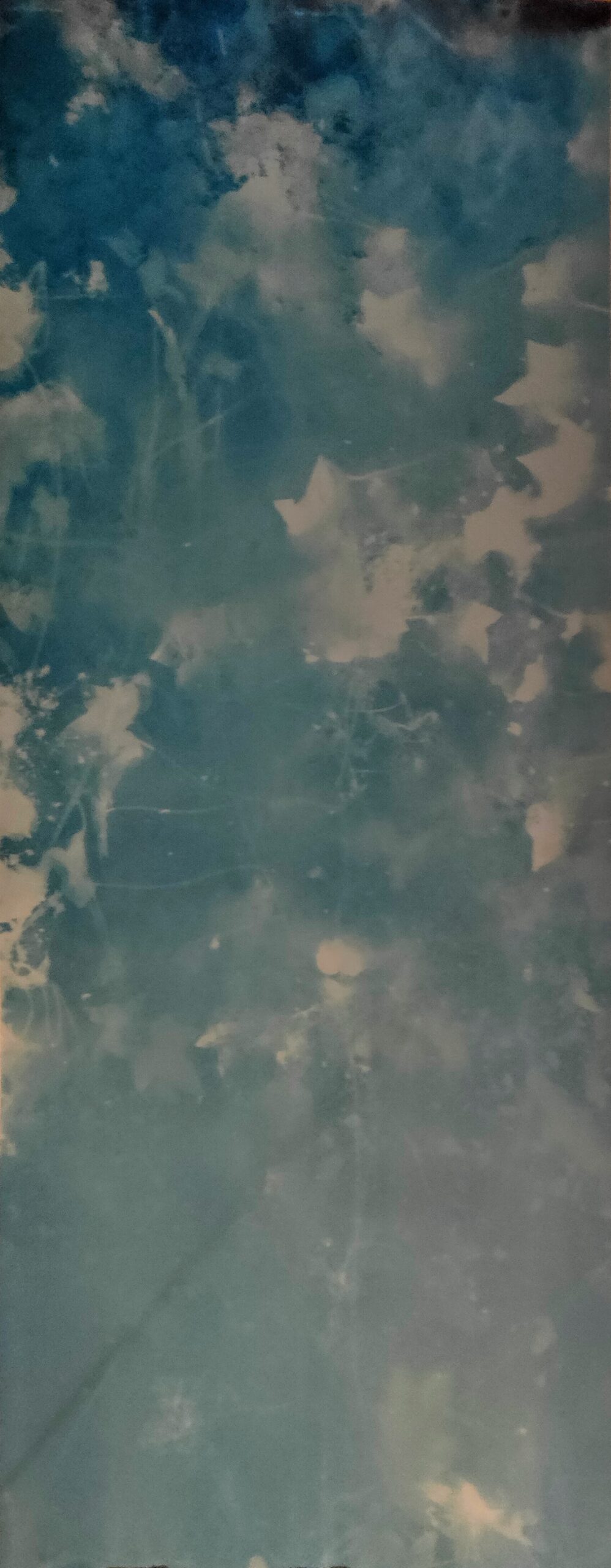Touching Nature: Touched by Nature: An Environmental Arts Therapy Exhibition, at Lauderdale House, Highgate, London. You can visit the online gallery, and read a review of the show (with a discussion of my work) here.
My “studies for a woodland drawing” were made in Queen’s Wood, an ancient woodland in north London. They’re less about what the wood looks like, and more about how I feel when I’m there, what the wood elicits in me, or allows me to express. The shape of the paper is like a long mirror, the type in which the whole body is seen; it’s also akin to the East Asian hanging scroll, traditionally used for calligraphy and landscape painting.

In the Japanese art of hatsuboku (flung ink) or haboku (broken ink) as practiced by Sesshū Tōyō(1420-1506) and his followers, the element of chance is powerfully introduced into the depiction of mountains, waterfalls etc. Ink is applied to the paper only after long contemplation, and then with the maximum spontaneity. Working in this way, I find that every mark risks being a ‘mistake’, and every artwork a ‘failure’. It’s not easy to accept this kind of letting go, in the artwork or in myself, but it is important to keep taking these risks.
Zen painters approach painting in a meditative spirit. They paint like beginners, honest, simple, and innocent.
Marjon de Jong, Sumi-e Master












Queen’s Wood, 10/10/20, 10.44-11.29am, 51° 34′ 45”N, 0° 8′ 34”W (left) and Queen’s Wood, September 2020 (right)
These artworks were made in Queen’s Wood. They’re about a duration of time committed to just being still in nature, and reflect the time I’ve spent committing to my creativity. Both are acts of self-care. Like a conventional photograph, the circular pool of light-sensitive emulsion becomes a record of a particular quality of light, time and location. The light in a place is perhaps the aspect I respond to most, but when I spend time in the woods I try to notice all aspects of nature unfolding around me.
In my art practice I welcome and learn from chance effects, letting nature take its course: the unpredictable relationships of water and pigment on paper, and between my eye and hand. The blue disc was painted in the dark before being brought out into the light. I was thinking of the sun and earth and moon, but didn’t anticipate its fiery edge, perhaps reminiscent of a solar eclipse and the moment of darkness before the sun returns: life after death, dissolution and regeneration.
For Queen’s Wood, September 2020 paper light-sensitized with cyanotype emulsion was tucked under stems of living ivy and left to expose in the sun (and then fixed by washing out with water). The procedure is ritualistic and performative: to go out in the early morning to make art in the woods (and with the woods) is exciting but makes me feel vulnerable too. I’m aware of the beauty, of growth and decay, and the natural cycles of which I am a part.
Times passes, and all things change, quickly or slowly.I sit for an hour as the cyanotype completes its photo-chemical reaction. This is a kind of spontaneous drawing, and I don’t know or want to know exactly what result will emerge. For me the image made with ivy reflects uncertainty and ambiguity. It may evoke hot summer skies, but it’s also like looking through ice.